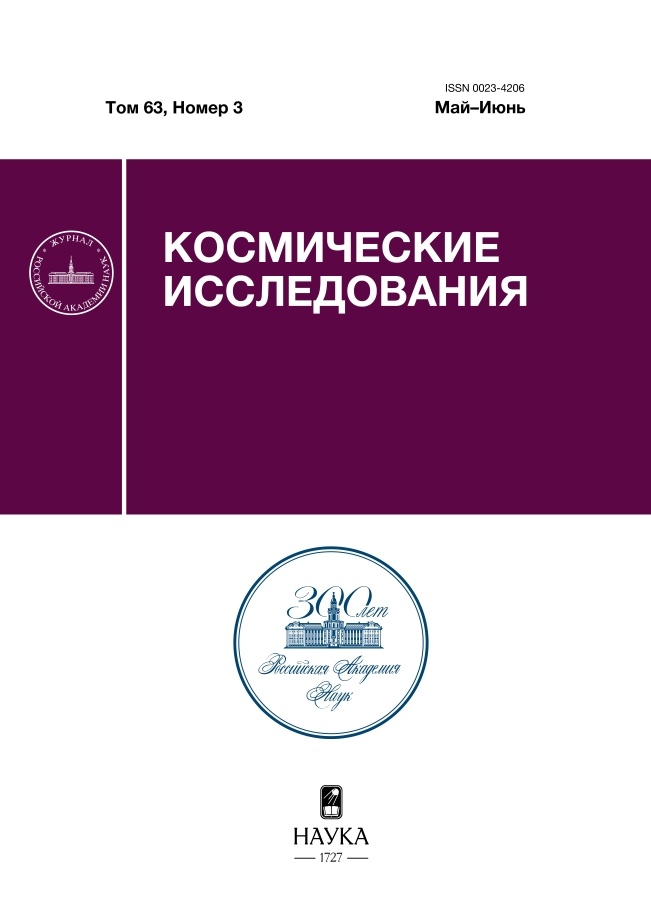A simple control scheme for the problem of spacecraft transfer into a target orbit with releasing the separable part of its launch vehicle into the Earth's atmosphere
- Authors: Proskuryakov A.I.1
-
Affiliations:
- Lomonosov Moscow State University Baku Branch
- Issue: Vol 63, No 3 (2025)
- Pages: 285-293
- Section: Articles
- URL: https://jdigitaldiagnostics.com/0023-4206/article/view/689524
- DOI: https://doi.org/10.31857/S0023420625030067
- EDN: https://elibrary.ru/PZYEXG
- ID: 689524
Cite item
Abstract
This paper considers the idea of reducing near-Earth space debris by releasing the spent additional fuel tank (AFT) and the booster's central block (CB) into the Earth's atmosphere. The spacecraft transfer from a reference circular orbit of an artificial Earth satellite to a target elliptical orbit is optimized. The transition maneuvers are carried out using a booster with a high limited-thrust engine and the AFT. The second zonal harmonic of the Earth's gravitational field is taken into account. A simplified model of spacecraft control is considered: the direction of the thrust vector on each of the active segments are determined by two angles that depend linearly on time.
Full Text
About the authors
A. I. Proskuryakov
Lomonosov Moscow State University Baku Branch
Author for correspondence.
Email: ap_91@mail.ru
Azerbaijan, Baku
References
- Григорьев И.С., Проскуряков А.И. Оптимизация перелета КА со сбросом дополнительного топливного бака и разгонного блока в атмосферу Земли // Aвтоматика и телемеханика. 2023. № 3. C. 22–43.
- Григорьев И.С., Проскуряков А.И. Задача выведения на целевую орбиту космического аппарата максимальной массы с использованием двигателя ограниченной тяги и сбросом отделяемых частей средств выведения в атмосферу Земли // Aвтоматика и телемеханика. 2024. № 1. C. 21–46.
- Григорьев И.С., Григорьев К.Г. К проблеме решения в импульсной постановке задач оптимизации траекторий перелетов космического аппарата с реактивным двигателем большой тяги в произвольном гравитационном поле в вакууме // Косм. исслед. 2002. Т. 40. № 1. C. 88–111.
- Григорьев И.С. Методическое пособие по численным методам решения краевых задач принципа максимума в задачах оптимального управления. М.: Изд-во Центра прикладных исследований при мех.-мат. факультете МГУ, 2005.
- Григорьев К.Г., Григорьев И.С., Заплетин М.П. Практикум по численным методам в задачах оптимального управления. М.: Изд-во Центра прикладных исследований при мех.-мат. факультете МГУ, 2007.
- Хайрер Э., Нерсетт С., Ваннер Г. Решение обыкновенных дифференциальных уравнений. Пер. с англ. М.: Мир, 1990.
- Исаев В.К., Сонин В.В. Об одной модификации метода Ньютона численного решения краевых задач // Ж. вычисл. мат. и мат. физики. 1963. № 6(3). С. 1114–1116.
- Федоренко Р.П. Введение в вычислительную физику. М.: Изд-во Моск. физ.-техн. ин-та, 1994.
- Мак-Кракен Д., Дорн У. Численные методы и программирование на ФОРТРАНе. Пер. с англ. М.: Мир, 1977.
- Дубошин Г.Н. Справочное руководство по небесной механике и астродинамике. М.: Наука, 1976. 864 с.
Supplementary files












